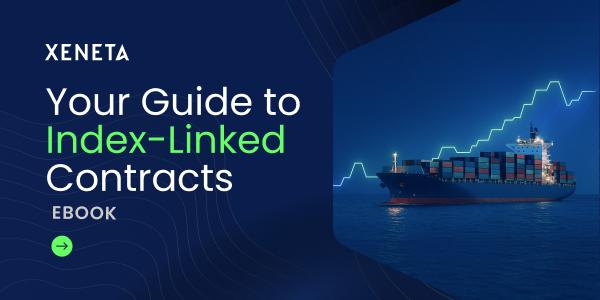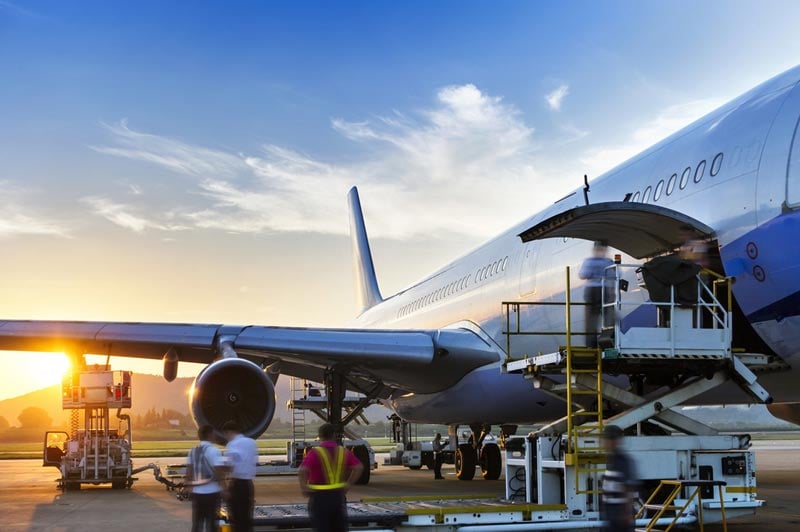An already-hot summer on the Northeast Asia to Europe air freight market is heating up further as freight forwarder sell air cargo rates hit the highest level in nearly a year-and-a-half.
By the first half of August, newly-contracted long-term general cargo sell rates hit USD 4.42 per kg, up 30% year-on-year. The peak season surcharges introduced in May and June have now been removed, but the increasing base rates were clearly enough to elevate the market.

It was a similar scenario for freight forwarder buy rates, with only the seasonal buy rate (valid for more than one month) growing at a slower pace (+16% year-on-year) compared to the sell rates.
Looking at forwarder buy spot rates (valid for up to one month), its growth is a leading indicator for the market as it tends to precede movement in forwarder sell rates on this corridor by around nine weeks. In early August, the forwarder buy general cargo spot rate grew 40% year-on-year, outpacing the growth in the forwarder sell rate (+30% year-on-year). The general cargo spot rate growth also exceeded the global average spot rate growth by the same ratio. Key drivers for this growth are strong e-commerce demand and a revival in semiconductor demand due to high-performance computing and the AI boom.
But as Europe goes on summer vacations, there are signs that forwarder buy spot rates are now peaking after cargo volume on this corridor peaked in mid-June. This aligns with developments in ocean container shipping where spot rates from Northeast Asia to Europe ticked down 2% in August after peaking in late July.
Airlines prepare for a ‘hot’ peak season
Looking ahead, airlines remain optimistic about the year-end peak season and they seem to be more prepared this time. Several airlines are adding capacity to the Northeast Asia to Europe corridor, with some even shifting their freighter capacity away from Latin America.
There is currently a large imbalance between fronthaul and backhaul volumes on this corridor. The dynamic load factor, Xeneta’s measure of capacity utilization based on volume and weight of cargo flown alongside available capacity, was nearly full (at 90%) on the Northeast Asia to Europe fronthaul.
In contrast, the backhaul load factor was only 43%, down 18 percentage points from 2019 levels. From transit hubs in the Middle East to Northeast Asia, the load factor was as low as 27%. Therefore, it is not surprising that fronthaul cargo spot rates are three times higher than backhaul rates.
Even allowing for the imbalance across fronthaul and backhaul, the Northeast Asia to Europe corridor is still more profitable than Europe to Latin America – hence carriers opting to redeploy capacity to drive revenue.
The flight times for the two corridors are similar (considering rerouting to avoid Russian airspace for the former). However, the average load factor from Northeast Asia is about 20 percentage points higher than the Europe to Latin America market, with spot cargo rates over 20% higher.
Additionally, the spot rates for the inbound Latin America market show no sign of a major increase, as the rates have remained relatively flat compared to last year.
Although backhaul rates from Europe to Northeast Asia are lower than the backhaul rates from Latin America to Europe, exports from Europe to transit hubs in Middle East can compensate for this imbalance. This is seen in the fact spot rates from Europe to Middle East are at a similar level to Latin America to Europe, with both being about 20% higher than Europe to Northeast Asia.
A blessing for freight buyers
Additional capacity on the Northeast Asia to Europe corridor is a blessing for freight buyers.
The last thing freight buyers want is a repeat of the 50% quarter-on-quarter cargo rate spike seen in Q4 2023.
With more than a third of cargo volumes still procured by freight forwarders in the spot market (10 percentage points above pre-pandemic levels), shippers need to take action. They should align with freight forwarders on peak season mechanisms before freight rates get uncomfortably high.
There is one caveat. Europe’s consumer spending remains muted along with fears of a global recession following a recent weak US jobs report. If upcoming cargo demand loses steam due to shippers frontloading imports during the usually slacker summer season, there could be a more muted end to 2024.
But perhaps continued geopolitical unrest in Middle East and Ukraine, strong low-value e-commerce demand, and an early Chinese New Year in 2025 might be enough to keep air cargo rates high.
%201.png)






